
13 minute read
Standing the Test of Time
When Food & Dining Magazine appeared in metropolitan Louisville for the first time in 2003, only five “microbreweries” were active here. Today the number approaches 40, but we don’t refer to them as “micros” a ny longer. Rather, in 2023 the accepted usage is “craft” breweries.
And yes, it’s now the Golden Age for craft beer lovers. At F&D we’ve often observed that America’s beer and brewing renaissance is a joyfully malleable concept. Seemingly infinite conceptual flexibility has resulted in an incessant, restless evolution and exponential growth. As fans, we’re both stunned and gratified by the range of expanded choices.
One measure of this shape-shifting is the Great American Beer Festival (GABF), held annually in Denver, Colorado. In 2003 there were 65 style categories delineated for the GABF’s medal competition. Last year there were 98, reflecting a proliferation of IPAs, sours, “farmhouse” ales and flavored stouts, which have usurped traditional pale ales, ambers and porter on so many beer lists.
Another reflection of changing times: In 2003, most brewery startups still found it obligatory to function as restaurants (called “brewpubs”), compelling dual outlays of precious capital for expensive brewing equipment and full kitchens. These days the slimmed-down “taproom” model is king, with breweries minimizing costs by purchasing patio furniture and contracting with outsiders to run snack kiosks and food trucks on site.
All is flux and nothing stays still, so what has become of the five Louisville breweries operating at the time of F&D’s 2003 founding?
One of them is unchanged. The second perseveres, albeit downsized. A third has reinvented itself and expanded. The remaining two have passed from the scene, but their bricks and mortar enjoy vibrant afterlives under different stewardship.
I’ll begin my survey with the two departed breweries mentioned below.
Browning’s Brewery (and restaurant) debuted in 2002 at Louisville Slugger Field (401 E. Main St.), swapping owners for a 2009 reboot before folding for good in 2011. Gone was She-Devil IPA, but the stage was set for Against the Grain (AtG) Brewery & Smokehouse’s tenancy later the same year. AtG has since emerged as Louisville’s generational craft beer standard bearer.
Concurrent with AtG’s steady ascent as a nationally renowned craft brewer, Cumberland Brews (2000) at 1576 Bardstown Rd. in the Highlands began showing unmistakable signs of old age. Cumberland ended in 2019 and AtG immediately stepped into the breach, remodeling the warm, compact restaurant and brewery space into a Public House of its very own.
By almost any measure, Bluegrass Brewing Company (BBC) is the granddaddy o f new-era Louisville “microbreweries” (sorry, I just can’t help it). BBC’s brewers began shoveling spent grain in 1993, and while old-timers (read: me) lament the loss of the original St. Matthews flagship location in 2017, the brand lives on at 300 W. Main St., downtown.
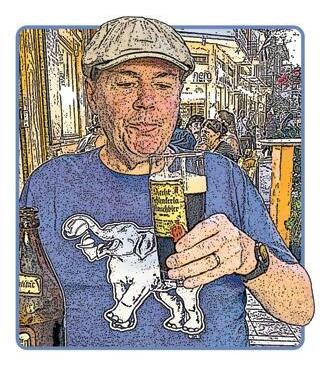
Founded in 2010, BBC at 3rd and Main is situated inside a beautifully repurposed historic bank building opposite the KFC Yum! Center, boasting a full-service restaurant, on-site brewery and Bourbon Barrel Loft event space. Old-school BBC beers like American Pale Ale, Dark Star Porter and Alt Bier continue to be brewed.
2023 is BBC’s 30th anniversary year, and I hope to be invited to the party, given that I was there on opening night in 1993. Too bad the duck ravioli no longer graces the menu.
In 2001 the original BBC in St. Matthews a bsorbed the failed Pipkin Brewing Company (1998-2001) at 636 E. Main St., downtown, now known as the NuLu district. A second corporate entity was capitalized, and the production-oriented BBC Beer
Company was born.
Thus began a tumultuous and melodramatic period of wonderful beer balanced by unremitting internal strife stemming from ownership disputes between the BBCs. Eventually they agreed to lead separate lives, and in 2015 the facility’s backers completely rebranded and overhauled the enterprise, henceforth Goodwood Brewing Company.
Goodwood has become Louisville’s largest beer producer by volume, with its signature Bourbon Barrel Stout aptly referencing “bourbonism’s” zeitgeist. Goodwood’s founding taproom has been augmented by similar configurations in Frankfort and Lexington, Kentucky, and fullservice brewpubs in Indianapolis, Indiana and Columbus, Ohio.

This brings us to the pleasingly retro outlier, New Albanian Brewing Company Pizzeria & Public House at 3312 Plaza Drive in New Albany, Indiana, the Louisville-area brewpub that has changed the least since F&D’s first issue in 2003.
NABC, formerly Sportstime Pizza and Rich O’s Public House (originating in 1987 and 1990, respectively), is 100% womanand family-owned. The brewery’s first batch came in 2002, making it Indiana’s 9th-oldest craft brewery in continuous operation.
Occasional bouts of interior revision haven’t altered NABC’s refrigerator pizzas, Elector Ale, breadsticks, Community Dark, beer cheese, and a moderately priced selection of guest beers. (Full disclosure: I was an NABC co-owner from 1990 through 2018, and persist in dining and drinking there.)
My first F&D beer column came with the Summer 2004 (Vol. 05) issue, in which I denounced mass market lagers and suggested alternative choices for hot weather among imported and American made beers.
A great many beer-related topics have been discussed in this space since then, but I’ve never touched on beer wholesalers.
Recall that the repeal of Prohibition brought the implementation of a “threetier” system for the distribution of beverage alcohol in America, stipulating a layer of middle men between producers and retailers. These three tiers remain largely intact, albeit blurred by exceptions in many states for small brewers, vintners and distillers, which enable innovations like the aforementioned brewery taprooms, as well as the option of self-distribution for small-scale producers.
For as long as I’ve worked in the beer business (since 1982), the family-owned firm of L.C. Nadorff & Son has been the wholesale distributor for AB-InBev (Budweiser) in New Albany and Floyd County, Indiana.
My 41 years of service is exceedingly small beer compared with Nadorff’s jawdropping tenure. When Prohibition’s restrictions ended in 1933, Nadorff jumped back into wholesaling, having acted as the local sales agent for Evansville’s Cook’s Goldblume beer through World War I.
But staggeringly, the Nadorff family’s involvement with beer extends all the way back to 1877, when Frank Nadorff bought the Spring Brewery from Louisa Sohn, widow of the founder. The brewery was located off Vincennes Street near presentday New Albany High School, and ran until 2007, when the Nadorffs switched to wholesaling.
Accordingly, I’m saddened to divulge that on January 1, 2023 the firm of L.C. Nadorff & Son ceased to exist at the tender age of 146, having sold its portfolio to Orange County Beverage from French Lick, itself dating to the 1940s.
Verily, consolidation in beer wholesaling proceeds apace, and “little guys” like Nadorff find future business projections questionable, even when possessing profitable product lines like AB InBev’s. An auction of Nadorff’s contents concluded a truly epochal longevity that owed to many factors, not the least of which were successive generations of family members willing to perpetuate the enterprise.
As with Nadorff, the two micro-cum-craft brewers BBC and NABC have enjoyed stable family ownership. Taken together, they’re 56 years old in 2023. Throw in 25 years for the various entities operating where Goodwood brews now, add F&D’s two decades, and the total is 101 years— still almost five decades fewer than Nadorff’s mind-blowing tally. (This column will be updated in 2043, when F&D observes its 40th birthday.) F&D
Restaurateurs Vincenzo and Agostino Gabriele are showing few signs of slowing down. They’ve devoted their respective culinary careers to mastering the exacting elements of fine dining, and 37 years after their Vincenzo’s Italian Restaurant opened downtown, it remains one of Louisville’s quintessential top tables.
BY ROGER BAYLOR | PHOTOS BY DAN DRY

Twenty years ago, when F&D first started reporting on Louisville cuisine, it was clear that a major factor shaping the city’s emerging national profile was the pervasive legacy of the Grisanti restaurants, the city’s most fabled modern-era edible construct.

In our third issue (Winter 2003), we took a deep dive into the Grisanti story and found that seventeen Louisville-area restaurants at the time were owned and operated by restaurateurs who were involved with the Grisanti revolution — a list topped by Vincenzo’s Italian Restaurant, then as now, a finedining lodestar, owned and operated by brothers Vincenzo and Agostino Gabriele.
From its inception in 1986, Vincenzo’s has exemplified the spirit of top-tier dining in Louisville, as attested by the roster of luminaries who’ve dined there, which includes Frank Sinatra, Jerry Lewis, Al Pacino and Tom Brady. (And not every oldschool Italian-style ristorante is immortalized in new-school hip hop lyrics like these by Louisville’s own Jack Harlow: “In the ‘Ville and I move like a Don, eating fettuccine at Vincenzo’s.”)
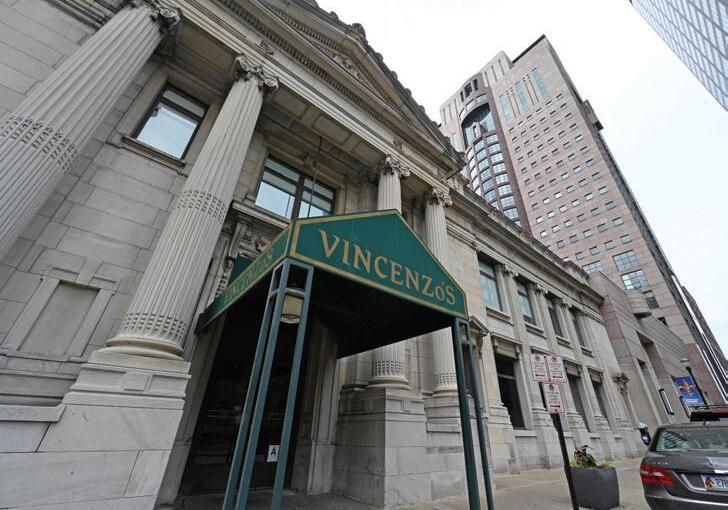

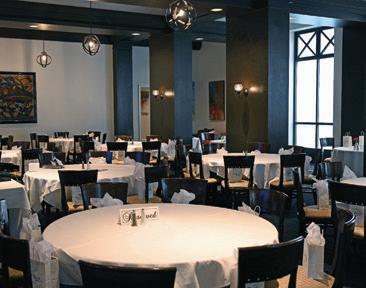


But leave it to co-owner Vincenzo Gabriele to remind us that celebrity is not the key to longevity in the restaurant business. “My father used to say the most important thing in hospitality is sincerity,” he says. “We treat everyone as if they are a guest at our family’s table.”
Fifty years ago, in 1973, another pair of brothers set out on the path that eventually brought Vincenzo and Agostino to Louisville. Those brothers, Don and Michael Grisanti, took over the family-style Casa Grisanti Italian restaurant founded in 1959 by their father and uncle. Their goal was to position Casa Grisanti as a paragon of fine dining.
Don and Michael had worked at Tony’s in St. Louis, a nationally renowned restaurant in the legendary Italian district called The Hill, a place where Italian immigrants (including the family of baseball legend Yogi Berra) settled in the 19th century.
Enter the Gabriele brothers
At Tony’s the Grisantis encountered Vincenzo Gabriele, a dapper native of Palermo, Sicily, whose “people person” skills as a maître d'hôtel, general manager and all-purpose service sector factotum had already marked him as a rising star. By then Vincenzo and his brother Agostino were already part of The Hill’s culinary elite.
Where Vincenzo gravitated toward front of the house jobs, Chef Agostino was an emerging master in back. From earliest childhood in Palermo Agostino had his mother shopping the markets and cooking from scratch, feeding a family of nine in a manner Agostino describes as “exquisite” even during tough economic times.
Even today, when Agostino is asked what makes Italian cuisine he doesn’t cite recipes — he recalls what he learned from his mother as a boy: “Fresh meat, never frozen; fresh vegetables, cooked fresh, every day — the tomato sauce and stock, fresh every day.”
(clockwise from top) Vincenzo’s stately entrance: a cozy table for two; a view of the main dining room; Vincenzo’s large private dining room; another, more intimate, private dining area a view of the bar; Table Captain George Stinson prepares beef cognac table side.

Agostino’s career began at age 14 with Rosticceria Domore in Palermo, followed by rapid steps up the culinary ladder, culminating at the internationally noted Le Caprice under Chef Salvatore Cascino, whom he credits as an enduring formative influence.
Agostino’s career also included stints in Germany, Northern Italy and back in Sicily, but ultimately he looped around to the Gateway City to open his own long-running eatery known as Agostino’s Little Place, where he remained until Vincenzo’s call to join him in Louisville came in 1987.
The Grisanti brothers lured Vincenzo to Casa Grisanti in 1975 with the promise of managerial responsibility, an ownership share, and treatment “as a brother.” It was a critical moment in Casa Grisanti’s shift from “a mama and papa place” to fine dining, and Vincenzo’s rigorous education and training standards shaped the restaurant’s reputation for hospitality and service.
Vincenzo focused on the idea that guest service depended on knowledgeable staffers — and providentially, his team was ready to be instructed. “If you don’t have the staff with you, you can’t succeed,” Vincenzo told F&D’s Rosen in 2004. “The thirst for knowledge of food and wine was so big that it was like an overnight thing. The staff was eager to learn.”
And Vincenzo was eager to teach them. Casa Grisanti and its spinoffs, Mamma Grisanti (1977) and Sixth Avenue (1981) gave Louisville’s dining scene a national profile, and countless employees accumulated their workplace decorations under the tutelage of Louisville’s finest. Meanwhile in St. Louis, Agostino garnered critical praise and prospered at his Little Place.
Sicily, where food is more essential than clothes

In his acclaimed novel, The Leopard, Giuseppe Tomasi di Lampedusa (the last Prince of Lampedusa) wrote vividly about the politics and cuisine of his native Sicily. Here he describes a version of the iconic baked pasta dish timpani that for some captures the sensual extravagance of Sicilian cookery:
“The burnished gold of the crusts, the fragrance of sugar and cinnamon they exuded, were but preludes to the delights released from the interior when the knife broke the crust; first came a mist laden with aromas, then chicken livers, hard-boiled eggs, sliced ham, chicken, and truffles in masses of piping hot, glistening macaroni, to which the meat juice gave an exquisite hue of suède.”
Sicily is a place where food is celebrated in every social context — from the hasty street food workers’ meal to the hours-long, multi-course bacchanals of haute cuisine.
(top) Veal chop stuffed with prosciutto and fontina cheese. (center) Sliced vine-ripened tomatoes with fresh mozzarella, basil and balsamic dressing. (right) Grilled filet of tenderloin stuffed with gorgonzola cheese and wild mushrooms with a bordelaise sauce.
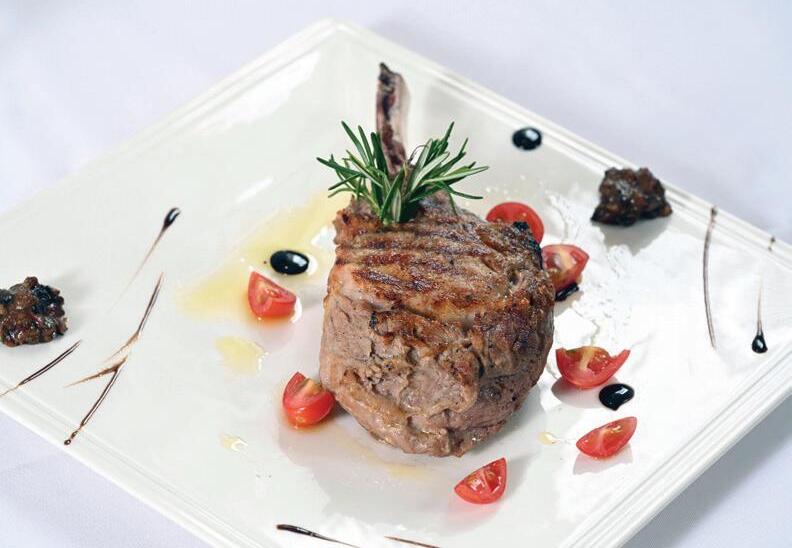
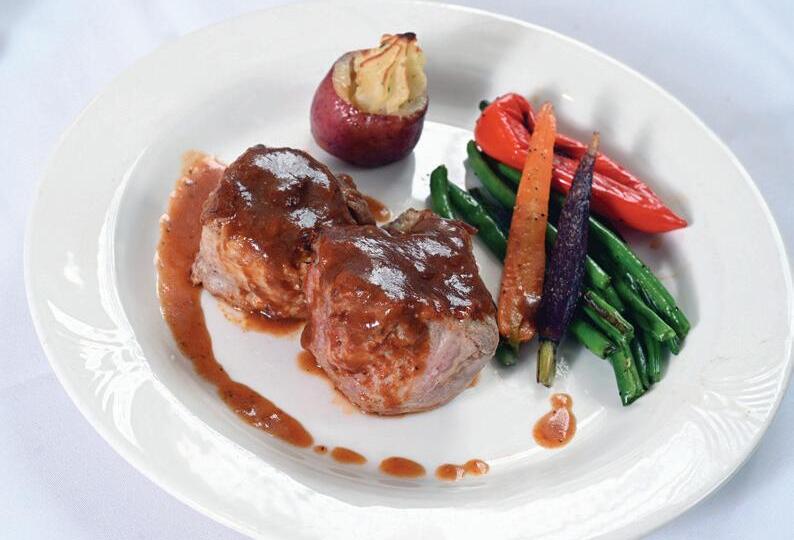


A volcanic island with voluminous sunshine, Sicily has been an agricultural treasure across the centuries, and the famed markets of Palermo, Sicily’s economic center, naturally became multicultural culinary crossroads, where centuries of trade commingled the flavors of the known world, North, South, East, and West. It was the ideal place for Vincenzo and Agostino Gabriele to absorb the panoply of possibilities in food and drink, if only by osmosis.
For centuries, traders, travelers, warriors, and would-be conquerors have been passing through Sicily.
Today, the conquering hordes are called “tourists,” many of whom come for the express purpose of eating. In 2016 my wife and I were among them, visiting Catania, the island’s second city, nestled stubbornly beneath the imposing bulk of Mt. Etna, and considered the horse meat capital of Italy. At a packed family-run eatery called La Terrazza del Barone, I chose an equine mixed grill, which was delicious.
I mentioned this to Agostino, whose workplace demeanor models an economy of movement — as an apprentice once noted, it’s as if Agostino has eyes in the back of his head, and these eyes sparkle with expression.
As we chatted about horse meat he tended to the slicing of a slab of veal, utilizing an all-wrists precision expected of scalpel-wielding surgeons and jazz drummers.
“Did you like the horse?” he asked.
“Yes, I did. Very much.”
Agostino nodded. “The meat is sweet; it’s good for you. It’s very good for the children to eat.”
Throughout, the chef’s wrists never stopped moving, nor ribbons of veal accumulating.
The Gabriele brothers, reunitedin Louisville
In 1969, when Vincenzo arrived in St. Louis to work at Tony’s, he had enthusiasm and a work ethic, but not a word of English. His first lesson: learning how to make sure guests were satisfied without knowing their language. Over time he developed into an unflappable, empathetic leader perfectly suited to the demands of fine cuisine and thrived in the Grisanti environment.
In September of 1984, Imasco, the Canada-based owner of Burger King and Hardee’s, acquired Grisanti Inc. in hopes of positioning the restaurants as fodder for a nationwide chain. It wasn’t a path Vincenzo cared to follow, so the following year, 1985, at 38, he resigned and began exploring options for a restaurant of his own.
That same year, Humana co-founders David Jones and Wendell Cherry had completed their iconic Humana skyscraper on Main Street, designed by renowned architect Michael Graves, the most visible component of their downtown corporate campus —which also included an elegant 1914 Beaux-Arts building repurposed into a corporate center, with two on-site restaurants.
“They were not happy with the way things were going there,” Vincenzo recalls, “and so they called and gave me a deal. It was incredible.”
“When I met with Mr. Cherry in his office, he asked me, ‘Vincenzo, how come you don't have an attorney representing you?’ I said ‘Wendell, the day that you don’t like what I’m doing here, please call me and I’ll give you the keys back.’ I believed I was dealing with honest and reputable men, above board, both of them. Mr. Jones and Mr. Cherry, they were top notch in the city.”
Vincenzo’s was born. For five years his non-compete agreement with Imasco prohibited him from using the word “Italian” — but “Continental” was allowed, and the menu focused on healthier, fitness-conscious “Eurospa” dishes, until the Italian identity was fully restored.
Agostino came aboard in 1987 as partner and executive chef. His decision to move came easily, given that the brothers Vincenzo and Agostino had married sisters, Pat and Joan. All were reunited in Louisville, and Vincenzo’s went from strength to strength. Happily, in 2018 Agostino’s sons Carmelo and Michael started Sarino, an Italian eatery in Germantown. Think of it as “Gabriele Family: The Next Generation.”


Lions in winter
On a weekday afternoon the lunch crowd at Vincenzo’s melted away, and as the inimitable Dan Dry wrapped F&D’s photo shoot, Vincenzo conferred quietly with a manager, gesturing firmly with his hands, but with his demeanor perfectly composed.
Agostino, who stood nearby in the emptying dining room, said aloud to no one in particular, “We have two groups tonight, for 30 and 115.” The chef took a deep breath, which might have signified anxiety if not for his expression of pure equanimity. The kitchen crew would rock this challenge, like always, and Vincenzo would tend to these large groups as if they were a shy couple on their very first date.
It requires no great perspicacity to suggest a linkage between traditional Italian fine dining rituals and the culture’s seemingly innate genius for operatic expression, perhaps defined as a flair for the dramatic, as well as a simple joy in the art of performance, as a counterbalance to formality.

The Italian table is about warmth, not Nordic chill; it is exuberant, not austere or detached. Alongside the linguine con gambaretti, carciofini marini, vitello saltimbocca and costolette d’agnello alla palermitana, a human(e) touch alchemizes courses — antipasti, pasta, secondi, le insalatine, vino and espresso — into a special meal, gradually cadenced, that leaves a lasting impression in the memory of guests.
It seems that a sense of purposeful timelessness takes time, whether the mood is celebrated in Palermo, St. Louis or Louisville, and yet, in a forever changing culinary world replete with new-to-market-franchise this and touchless quick casual chain’s that, is there a future for the sort of Italian-flavored long, languid, fine dining experience still available for savoring at Vincenzo’s?
According to Vincenzo himself, there is “absolutely no question” fine dining as we know it will continue. As for his own restaurant: “We're going to try to do the best we can to continue to serve our guests.”
A tad coyly, Agostino mulled the same question, his eyes playfully twinkling. Then he shrugged, and gave us the coda.
“At least we’re still young.” F&D
STORY AND PHOTOS BY HEATHER WIBBELS

